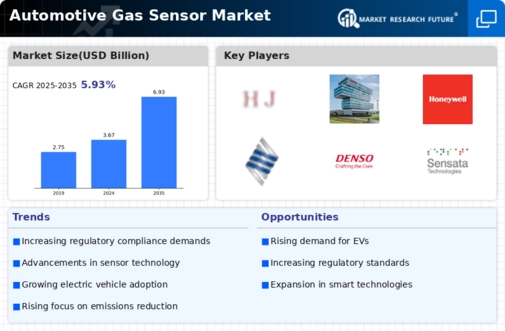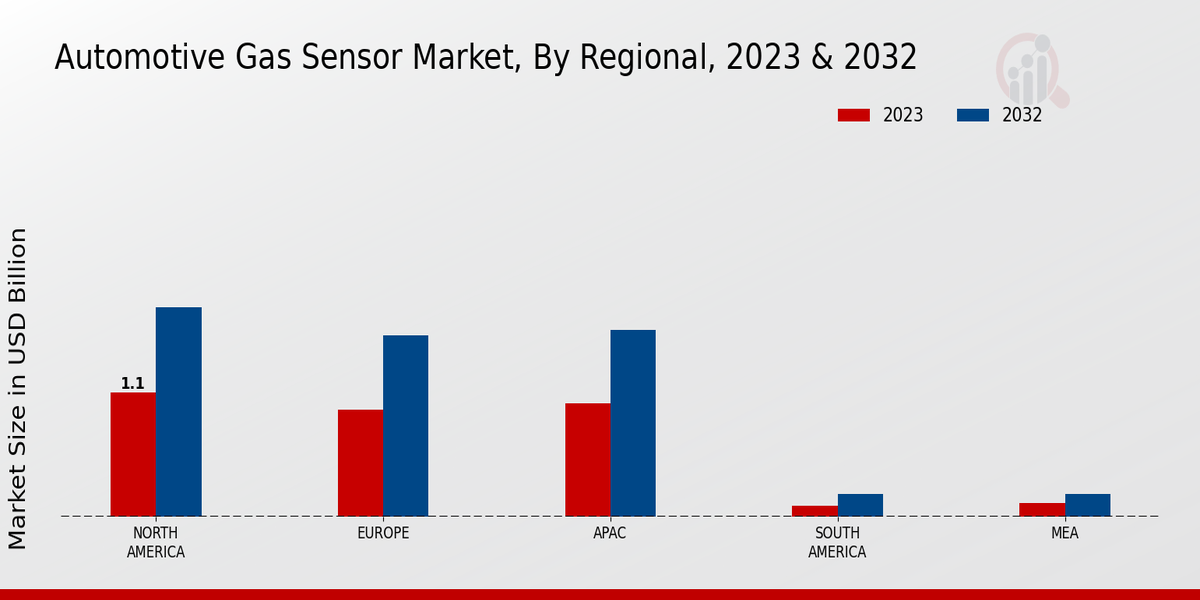Market Growth Projections
Rising Demand for Electric Vehicles
The Global Automotive Gas Sensor Market Industry is significantly influenced by the rising demand for electric vehicles (EVs). As consumers and manufacturers alike shift towards more sustainable transportation solutions, the need for efficient gas sensors in EVs becomes paramount. These sensors play a critical role in monitoring air quality and ensuring compliance with environmental standards. The market is projected to grow, with an anticipated value of 6.93 USD Billion by 2035, indicating a robust growth trajectory driven by the electrification of the automotive sector and the integration of advanced sensor technologies.
Growing Awareness of Air Quality Issues
The Global Automotive Gas Sensor Market Industry is also driven by the growing awareness of air quality issues among consumers and policymakers. As urbanization increases, concerns regarding air pollution and its impact on public health have intensified. This awareness is prompting governments to enforce stricter emission standards, thereby increasing the demand for automotive gas sensors. The market's growth is further supported by initiatives aimed at promoting cleaner transportation solutions. Consequently, the industry is likely to witness substantial growth as stakeholders prioritize air quality improvement through the adoption of advanced gas sensing technologies.
Increasing Stringency of Emission Regulations
The Global Automotive Gas Sensor Market Industry is experiencing a notable surge due to the increasing stringency of emission regulations across various regions. Governments worldwide are implementing stricter standards to mitigate air pollution and enhance environmental sustainability. For instance, the European Union has introduced regulations that require vehicles to meet specific emission limits, thereby driving the demand for advanced gas sensors. This regulatory landscape is expected to propel the market, with projections indicating a market size of 3.67 USD Billion in 2024, reflecting the urgency for manufacturers to adopt innovative gas sensing technologies.
Technological Advancements in Sensor Technologies
Technological advancements in sensor technologies are propelling the Global Automotive Gas Sensor Market Industry forward. Innovations such as miniaturization, enhanced sensitivity, and improved accuracy are enabling the development of next-generation gas sensors. These advancements facilitate real-time monitoring of vehicle emissions, thereby enhancing compliance with regulatory standards. As manufacturers invest in research and development to create more sophisticated sensors, the market is poised for growth, with a projected compound annual growth rate (CAGR) of 5.95% from 2025 to 2035. This trend underscores the importance of technological evolution in shaping the future of automotive gas sensing.
Expansion of Automotive Industry in Emerging Markets
The Global Automotive Gas Sensor Market Industry is witnessing growth due to the expansion of the automotive industry in emerging markets. Countries such as India and Brazil are experiencing a surge in vehicle production and sales, driven by rising disposable incomes and urbanization. This expansion necessitates the integration of advanced gas sensors to meet regulatory requirements and enhance vehicle performance. As these markets develop, the demand for automotive gas sensors is expected to increase significantly, contributing to the overall market growth. The focus on sustainable automotive solutions in these regions further amplifies the need for effective gas sensing technologies.














